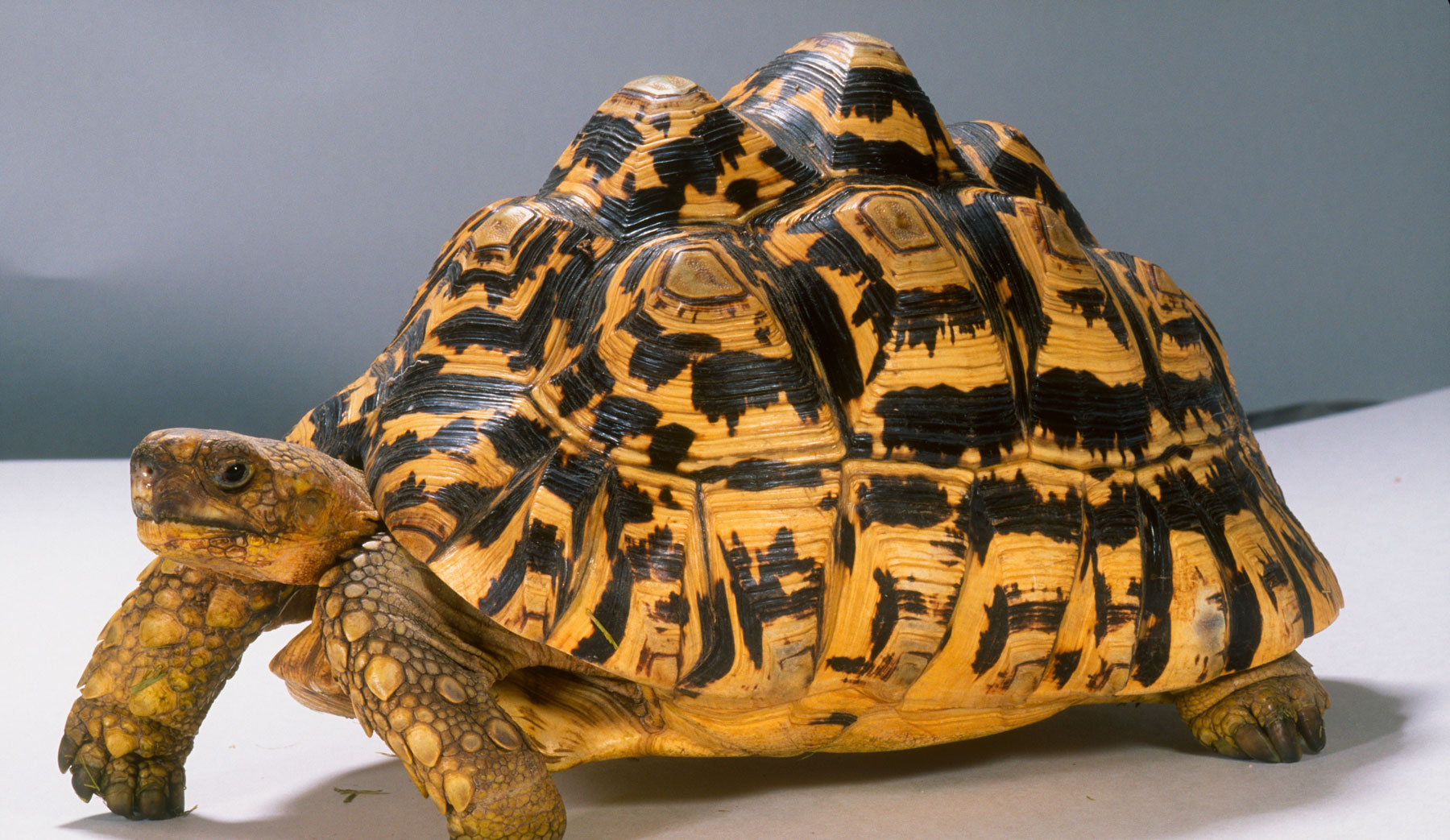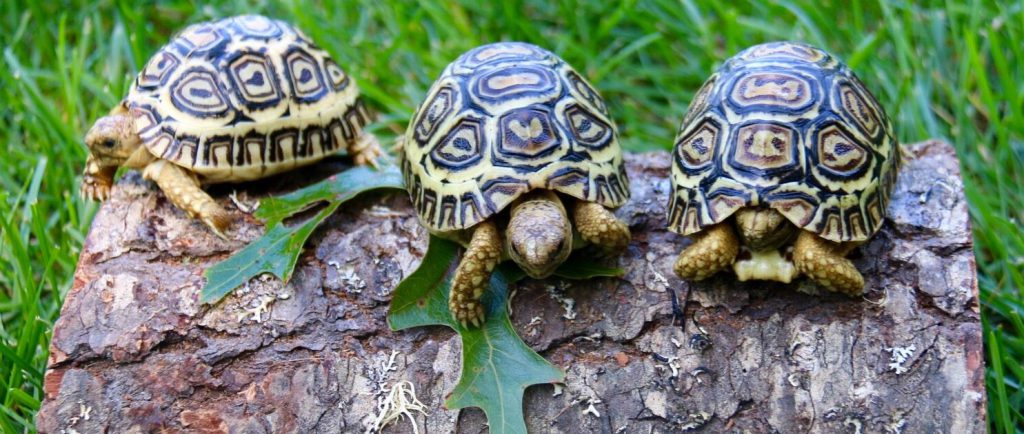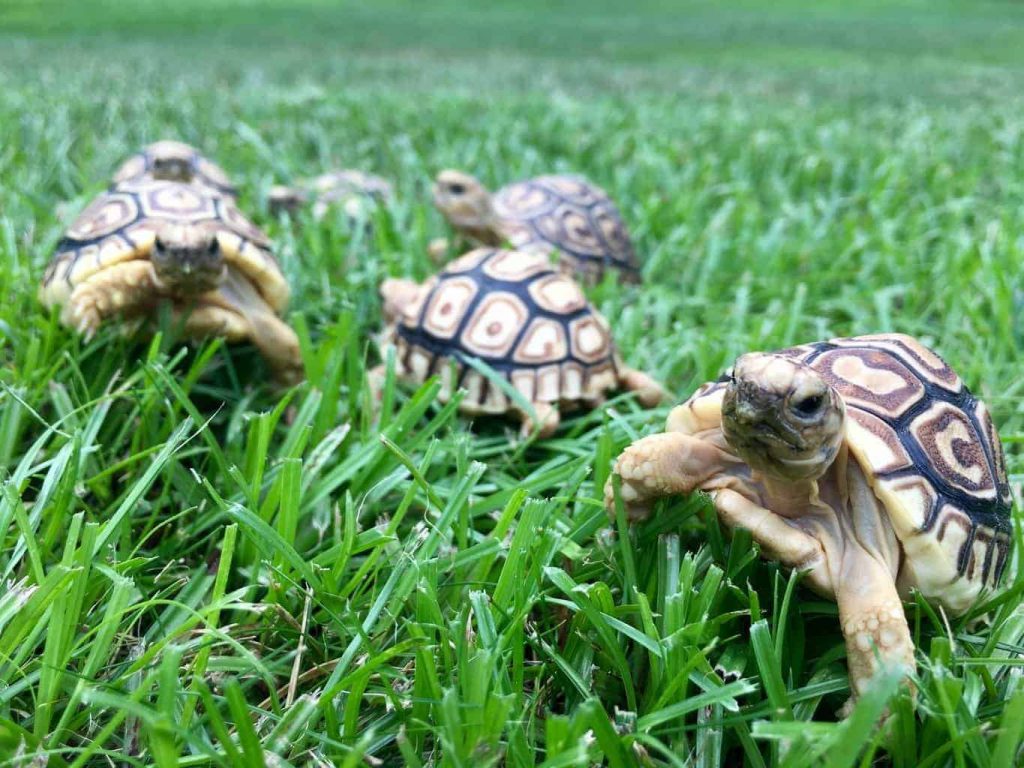
Leopard Tortoise Size, housing, food and light requirements
Leopard tortoise is a beautiful tortoise and has a yellowish or buff-colored highly domed carapace with black blotches. They have a huge size and have a lot of weight. They are one of the largest tortoise species. Male tortoises have longer and thicker tails while females have slightly concave plastrons
Contents
Size and weight:-

Leopard tortoises are one of the largest tortoises in the world they can reach a size of over 2 feet and can weigh over 100 pounds Some reach the size of 15-18 inches and weight of about 30-50 pounds Male Leopard tortoise is generally than his female counterpart You should always keep their gigantic size as adults when you plan to get a hatchling or baby tortoise. Size is the most common reason they are put up for adoption later
Life span:-
Like all other large tortoises, Leopard tortoise can live up to 100 years if cared for properly
Tortoise housing (Indoor):-

- The most popular form of tortoise house for Leopard tortoise is the turtle table
- 2 feet by 2 feet housing is sufficient for a hatchling and should be increased over time as it grows big
- For an adult Leopard tortoise housing size should be at least 4 feet by 8 feet
- Holes can be made at the bottom of the turtle table for the food to sink in
- Water dish should be provided for the tortoise to soak in
Outdoor:-

- Outdoor housing is more preferred due to its large size and grazing habits
- It should be predator proof and should be large enough to allow natural movement of the tortoise
Heat and light requirements:-
- A clip lamp should be provided for basking purpose with a temperature of 90F
- Full-spectrum light is also required for UVB required during Vit D3 synthesis
Hibernation:- Leopard tortoise does not hibernate in nature. Facilities should be provided for its good health and well being indoors in cooler climates during winters
Substrate:-

- Topsoil and children’s play sand can be used as a substrate
- Cypress bark can be used along with grass hay as it also provides nourishment in case your pet tortoise decides to nibble it
- In case of sand is used as a substrate, food should not be kept directly on sane as it tends to stick to it
Tortoise food:-

- Leopard tortoises are grazing species and you should make effort to duplicate this diet in captivity
- Tortoise food should be rich in fiber, calcium and low in protein
- Diet for Leopard tortoise should include: Orchard grass or hay, Timothy grass or Bermuda grass
- Leafy greens like dandelions, clover, endives, grape leaves
- Cactus pads
- Additional supplementation of calcium can be given
- Vit D3 should also be provided if Leopard tortoise is kept indoors
This article on leopard tortoise pet gives you information about the different things of your pet tortoise and will help you in keeping your pet properly
